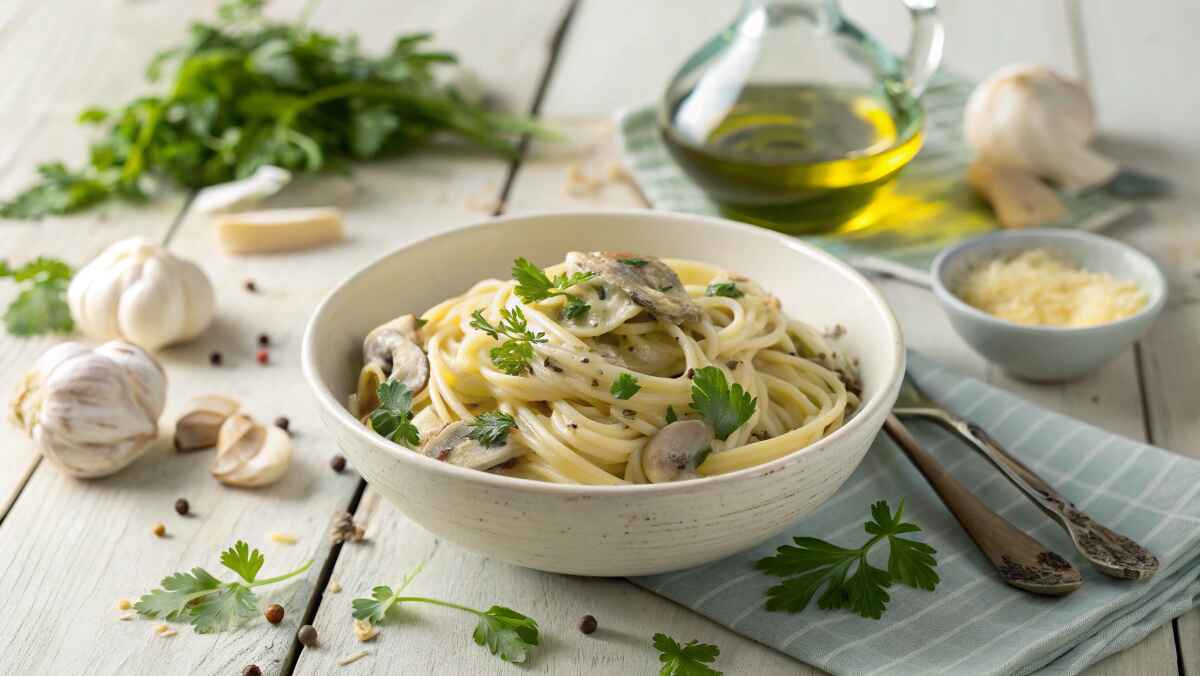There’s nothing quite as comforting as a warm, creamy bowl of potato soup—rich, velvety, and packed with flavor. But what if your soup turns out bland, flat, or lacking the depth you were hoping for? Why does my potato soup have no flavor? This is a common problem, but luckily, it’s one that’s easy to fix with the right techniques.
Potatoes have a naturally mild flavor, which means they need a little extra help to shine in a soup. Without the proper balance of seasonings, aromatics, and broth, your soup can end up tasting dull and uninspiring. But don’t worry! A few simple adjustments can transform your dish from ordinary to rich, savory, and deeply satisfying.
In this guide, we’ll explore:
✅ Why your potato soup might be lacking flavor
✅ Proven techniques to fix and enhance its taste
✅ Tasty ingredient additions to add depth and richness
If you’re also wondering, “Should I Cook Potatoes Before Adding to Soup?”, check out this in-depth guide to learn how different cooking methods affect texture and consistency.
With the right seasonings, cooking techniques, and ingredients, your next batch of potato soup will be bursting with warmth, depth, and irresistible flavor. Let’s dive in! 🍲✨
Why Does My Potato Soup Taste Bland?
Several factors can contribute to flavorless potato soup. Here’s what might be going wrong:
1. Insufficient Seasoning
Potatoes have a naturally mild flavor and require generous seasoning to shine. A common mistake is not adding enough salt throughout the cooking process.
How to Fix It:
- Taste and adjust seasoning at multiple stages.
- Use kosher or sea salt for a cleaner taste.
- Enhance with black pepper, smoked paprika, thyme, or bay leaves.
For more insight into seasoning techniques, explore this guide on making flavorful soups at home.
2. Using Water Instead of Broth
If you’re using plain water instead of broth, your soup may lack the savory depth that makes it satisfying.
How to Fix It:
- Switch to a rich homemade broth or high-quality store-bought stock.
- Stir in a concentrated bouillon cube or paste to boost the umami flavor.
For a creamy twist, try Panera Chicken Tortilla Soup Recipe, which uses a flavorful broth as its base.
3. Skipping Aromatics
Aromatics like onions, garlic, leeks, and celery are essential for building layers of flavor.
How to Fix It:
- Sauté onions and garlic in butter or olive oil before adding potatoes and liquid.
- If you forgot this step, fry some garlic and shallots separately, then mix them into the soup.
Want to experiment with other aromatics? Check out this garlic-based soup recipe.4. Overcooking or Undercooking Potatoes
The texture of your potatoes can impact the overall flavor:
- Overcooked potatoes can turn mushy and flavorless.
- Undercooked potatoes won’t release enough starch, leading to a thin soup.
How to Fix It:
- Simmer gently instead of boiling rapidly.
- Blend part of the soup for a thicker consistency while keeping some chunks for texture.
For more potato-based recipes, try this Potato Mille-Feuille Recipe.
5. Missing an Umami Boost
Umami is the fifth taste that adds a deep, savory complexity to food. Without it, your soup may taste flat.
How to Fix It:
- Stir in a small amount of soy sauce or miso paste.
- Sprinkle in grated Parmesan cheese or a Parmesan rind while simmering.
- Add bacon, smoked sausage, or ham for a meaty depth.
For an umami-packed meal idea, explore this protein-rich soup recipe.
How to Fix Bland Potato Soup: Quick Solutions
1. Season in Layers
Instead of adding all your salt at once, sprinkle it in at different stages to build flavor.
2. Use Dairy for Creaminess
A splash of cream, whole milk, or crème fraîche can add richness.
3. Add a Touch of Acidity
A few drops of lemon juice or apple cider vinegar can brighten the flavors.
4. Experiment with Fresh Herbs
Stir in chives, dill, or parsley at the end for a fresh, vibrant finish.
Enhancing the Flavor with Additional Ingredients
Sometimes, a simple tweak can turn a good potato soup into a great one. If your soup tastes flat or one-dimensional, consider adding bold, complementary ingredients that provide texture, depth, and richness. From crispy toppings to fresh vegetables and umami-packed add-ins, these enhancements can elevate your soup into a restaurant-quality dish.
Let’s explore some of the best ways to enhance the flavor and texture of your potato soup:
Toppings for Extra Flavor and Texture
A great bowl of soup isn’t just about what’s inside—it’s also about what’s on top! The right toppings can add crunch, creaminess, and bursts of bold flavor that make every bite more exciting.
1. Crispy Bacon Crumbles 🥓
Few ingredients pair better with potatoes than bacon. The crispy, salty, smoky flavor cuts through the creaminess of the soup and adds a satisfying crunch.
✅ How to Use It:
- Cook thick-cut bacon until crispy, then crumble it over each bowl before serving.
- For extra smoky depth, cook your onions or garlic in the bacon fat before adding the broth.
👉 Love bacon? You might enjoy this guide on beef bacon, which offers a unique alternative to pork bacon.
2. Shredded Cheese 🧀
Cheese and potatoes are a match made in heaven. Melting cheddar, Gruyère, or Parmesan into the soup creates a rich, velvety texture while adding layers of umami flavor.
✅ Best Cheese Choices:
- Sharp Cheddar – Adds bold flavor and creamy consistency.
- Gruyère – Nutty and melty, perfect for adding depth.
- Parmesan – A sprinkle of grated Parmesan or a Parmesan rind simmered in the broth enhances the soup’s umami factor.
3. Croutons or Toasted Bread Cubes 🥖
A crunchy contrast to a creamy soup is always a good idea! Homemade croutons or toasted bread cubes soak up the rich flavors while providing a satisfying bite.
✅ How to Make Them:
- Cube day-old bread, toss with olive oil, salt, and garlic powder, then bake at 375°F (190°C) for 10–15 minutes until golden brown.
- For an extra cheesy twist, sprinkle some Parmesan over the croutons before baking.
Vegetables for a Nutrient Boost
Adding vegetables to potato soup not only enhances its flavor but also improves its nutritional value. Some vegetables contribute sweetness and depth, while others introduce earthiness and texture.
1. Diced Carrots and Celery 🥕
This classic mirepoix combo (onions, carrots, and celery) creates a rich foundation for many soups. While potatoes are mild, carrots provide a gentle sweetness, and celery adds a slight bitterness that balances flavors.
✅ How to Use Them:
- Sauté finely diced carrots and celery with onions and garlic before adding broth to create a flavorful base.
- For extra sweetness, roast the carrots beforehand and blend them into the soup.
👉 Want to learn more about pairing ingredients? Check out this detailed guide on balancing flavors.
2. Wilted Spinach or Kale 🌿
Leafy greens like spinach and kale add a nutritional punch and a pop of color, making your soup more vibrant and well-rounded.
✅ Best Ways to Add Greens:
- Stir in a handful of baby spinach just before serving. It will wilt quickly without overcooking.
- If using kale, sauté it in olive oil first to remove any bitterness before adding it to the soup.
- Blend a small portion of the soup with greens for a creamy, green-infused variation.
Additional Enhancements for Deeper Flavor
If you really want to take your potato soup to the next level, consider adding these flavor-enhancing ingredients:
1. Sour Cream or Crème Fraîche
A dollop of sour cream, crème fraîche, or Greek yogurt adds tanginess and creaminess, balancing the soup’s richness.
2. Spices and Seasonings
- Smoked Paprika – Adds a warm, smoky depth.
- Cayenne Pepper – A pinch brings a gentle heat.
- Nutmeg – A classic pairing with creamy soups, adding subtle warmth.
3. Protein Additions
Want to make your soup more filling? Try adding:
- Shredded rotisserie chicken for a hearty twist.
- Sautéed sausage or chorizo for extra spice and richness.
For more protein-packed meal ideas, explore this high-protein recipe collection.
Common Mistakes to Avoid
🚫 Adding Too Much Liquid – Start with less broth and adjust as needed.
🚫 Over-Pureeing the Soup – Keep some potato chunks for texture.
🚫 Forgetting to Taste as You Cook – Adjust seasoning throughout the process.
Potato soup is a classic comfort food, but achieving a truly rich, flavorful, and satisfying bowl requires more than just boiling potatoes in liquid. The key lies in layering flavors, using quality ingredients, and balancing seasoning and texture.
By paying attention to the broth, aromatics, seasonings, and umami boosters, you can take your soup from flat and uninspiring to deeply savory and well-rounded. Whether it’s adding a dash of acidity to brighten the flavors, incorporating dairy for creaminess, or experimenting with fresh herbs for a burst of freshness, small adjustments can make a huge difference.
The next time you make potato soup, approach it with the mindset of building flavor at every step. Start with a flavorful base, let the ingredients develop and meld through gentle cooking, and don’t be afraid to taste and tweak as you go.
With these expert tips and creative additions, your next batch of potato soup will be bursting with depth, warmth, and irresistible taste—a dish that not only nourishes but delights with every spoonful. So grab your pot, gather your ingredients, and let’s turn that humble bowl of potato soup into a culinary masterpiece!
👉 For more tips on perfecting your soup technique, check out Should I Cook Potatoes Before Adding to Soup?.




